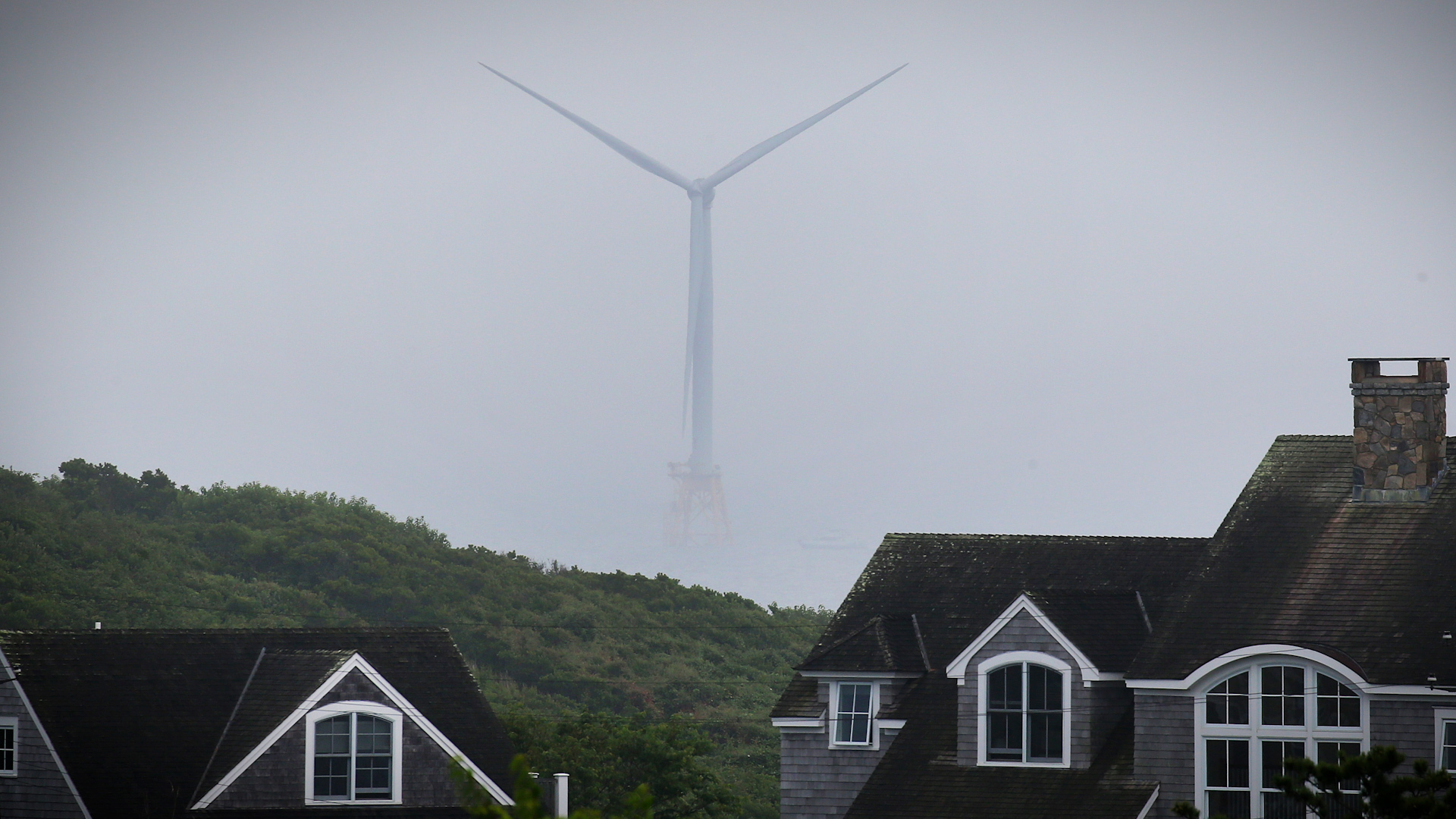
SHANNON LONGWORTH: THE WIDE-OPEN LANDSCAPES OF THE MIDWEST AND GREAT PLAINS HAVE PROVIDED A CLEAR PATH FOR HARNESSING THE NATION’S WIND ENERGY.
BUT A NEW LOCATION FOR THOSE [TOWERING TURBINES] IS ON THE HORIZON, AND IT’S SOMETHING OF A MAIDEN VOYAGE FOR RENEWABLE ENERGY IN THE U.S.
BY 2030, THE BIDEN ADMINISTRATION AIMS TO DEPLOY UP TO 30 GIGAWATTS OF OFFSHORE WIND ENERGY– ENOUGH TO POWER 10 MILLION HOMES. THAT’S ROUGHLY 7% OF THE COUNTRY.
WIND AT SEA IS GENERALLY STRONGER AND MORE CONSISTENT THAN THAT ON LAND, WHICH MEANS IT’S A MORE RELIABLE SOURCE OF RENEWABLE ENERGY.
THERE ARE ALREADY TWO OPERATING OFFSHORE WIND FARMS IN THE U.S.–ONE NEAR BLOCK ISLAND WITH FIVE TURBINES…
AND THE OTHER, A PILOT PROJECT NEAR VIRGINIA WITH JUST TWO TURBINES. DOMINION ENERGY PLANS TO EXPAND THERE, CONSTRUCTING 176 TURBINES BEGINNING IN 2024. IT’LL BE THE LARGEST OFFSHORE WIND FARM IN THE COUNTRY.
IT’S JUST THE BEGINNING. SITES DOWN THE EAST COAST ARE IN VARIOUS STAGES OF RESEARCH, EVALUATION, AND CONSTRUCTION TO HOST OTHER PROJECTS.
FOR EXAMPLE, A SPECIALIZED SHIP IS JUST OFF OF MARTHA’S VINEYARD THIS SUMMER, INSTALLING A SIXTY-TWO TURBINE PROJECT TO POWER MORE THAN 400,000 HOMES.
WHILE SOURCING POWER FROM OCEAN WINDS IS RELATIVELY NEW TO US, THE EU’S BEEN DOING IT FOR DECADES. DENMARK INSTALLED THE VERY FIRST OFFSHORE WIND FARM IN 1991.
THE UK HAS MORE THAN 40 WIND FARMS CURRENTLY OPERATIONAL.
ON OUR SIDE OF THE POND, THIS TECHNOLOGY IS FACING SOME APPREHENSION.
BUILDING TURBINES IN THE WATER IS VERY EXPENSIVE– NOT JUST TO INSTALL, BUT TO MAINTAIN.
ALSO, REMEMBER WE’RE ABOUT TO SURROUND A GREAT DEAL OF COASTAL LAND WITH GIANT SPINNING BLADES. HERE’S WHAT THEY LOOK LIKE IN THE MIDWEST– IS THIS GOING TO AFFECT TOURISM? THE FISHING INDUSTRY? REAL ESTATE VALUES? OR COULD IT INCREASE VALUE IN THOSE AREAS?
AND DON’T FORGET MARINE LIFE ITSELF. CONSERVATION GROUPS AND POLITICIANS ARE CONCERNED ABOUT THE TURBINES’ EFFECT ON OCEAN LIFE.
THE DEPARTMENT OF ENERGY ACKNOWLEDGES “WIND PLANTS CAN IMPACT LOCAL WILDLIFE.”
WE SAW THIS WHILE REPORTING ON WIND TURBINES’ THREAT TO THE GOLDEN EAGLE POPULATION IN WYOMING.
WHILE THERE’S NO EVIDENCE THAT EXISTING OFFSHORE PROJECTS HAVE SIGNIFICANTLY HARMED MARINE MAMMALS, WE’LL CONTINUE FOLLOWING THE RESEARCH AS CONSTRUCTION RAMPS UP ON THE EAST COAST.









